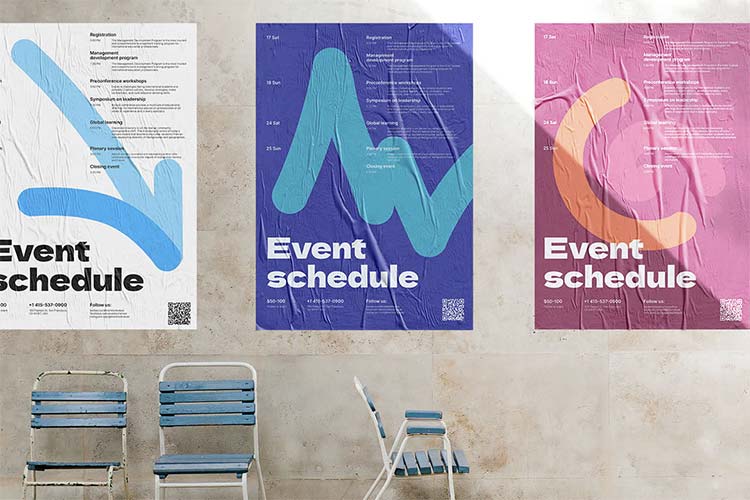
It can be hard to connect a certain amount of average global warming with one’s everyday experience, so researchers at MIT have devised a different approach to quantifying the direct impact of climate change. Instead of focusing on global averages, they came up with the concept of “outdoor days”: the number days per year in a given location when the temperature is not too hot or cold to enjoy normal outdoor activities, such as going for a walk, playing sports, working in the garden, or dining outdoors.
In a study published earlier this year, the researchers applied this method to compare the impact of global climate change on different countries around the world, showing that much of the global south would suffer major losses in the number of outdoor days, while some northern countries could see a slight increase. Now, they have applied the same approach to comparing the outcomes for different parts of the United States, dividing the country into nine climatic regions, and finding similar results: Some states, especially Florida and other parts of the Southeast, should see a significant drop in outdoor days, while some, especially in the Northwest, should see a slight increase.
The researchers also looked at correlations between economic activity, such as tourism trends, and changing climate conditions, and examined how numbers of outdoor days could result in significant social and economic impacts. Florida’s economy, for example, is highly dependent on tourism and on people moving there for its pleasant climate; a major drop in days when it is comfortable to spend time outdoors could make the state less of a draw.
The new findings were published this month in the journal Geophysical Research Letters, in a paper by researchers Yeon-Woo Choi and Muhammad Khalifa and professor of civil and environmental engineering Elfatih Eltahir.
“This is something very new in our attempt to understand impacts of climate change impact, in addition to the changing extremes,” Choi says. It allows people to see how these global changes may impact them on a very personal level, as opposed to focusing on global temperature changes or on extreme events such as powerful hurricanes or increased wildfires. “To the best of my knowledge, nobody else takes this same approach” in quantifying the local impacts of climate change, he says. “I hope that many others will parallel our approach to better understand how climate may affect our daily lives.”
The study looked at two different climate scenarios — one where maximum efforts are made to curb global emissions of greenhouse gases and one “worst case” scenario where little is done and global warming continues to accelerate. They used these two scenarios with every available global climate model, 32 in all, and the results were broadly consistent across all 32 models.
The reality may lie somewhere in between the two extremes that were modeled, Eltahir suggests. “I don’t think we’re going to act as aggressively” as the low-emissions scenarios suggest, he says, “and we may not be as careless” as the high-emissions scenario. “Maybe the reality will emerge in the middle, toward the end of the century,” he says.
The team looked at the difference in temperatures and other conditions over various ranges of decades. The data already showed some slight differences in outdoor days from the 1961-1990 period compared to 1991-2020. The researchers then compared these most recent 30 years with the last 30 years of this century, as projected by the models, and found much greater differences ahead for some regions. The strongest effects in the modeling were seen in the Southeastern states. “It seems like climate change is going to have a significant impact on the Southeast in terms of reducing the number of outdoor days,” Eltahir says, “with implications for the quality of life of the population, and also for the attractiveness of tourism and for people who want to retire there.”
He adds that “surprisingly, one of the regions that would benefit a little bit is the Northwest.” But the gain there is modest: an increase of about 14 percent in outdoor days projected for the last three decades of this century, compared to the period from 1976 to 2005. The Southwestern U.S., by comparison, faces an average loss of 23 percent of their outdoor days.
The study also digs into the relationship between climate and economic activity by looking at tourism trends from U.S. National Park Service visitation data, and how that aligned with differences in climate conditions. “Accounting for seasonal variations, we find a clear connection between the number of outdoor days and the number of tourist visits in the United States,” Choi says.
For much of the country, there will be little overall change in the total number of annual outdoor days, the study found, but the seasonal pattern of those days could change significantly. While most parts of the country now see the most outdoor days in summertime, that will shift as summers get hotter, and spring and fall will become the preferred seasons for outdoor activity.
In a way, Eltahir says, “what we are talking about that will happen in the future [for most of the country] is already happening in Florida.” There, he says, “the really enjoyable time of year is in the spring and fall, and summer is not the best time of year.”
People’s level of comfort with temperatures varies somewhat among individuals and among regions, so the researchers designed a tool, now freely available online, that allows people to set their own definitions of the lowest and highest temperatures they consider suitable for outdoor activities, and then see what the climate models predict would be the change in the number of outdoor days for their location, using their own standards of comfort. For their study, they used a widely accepted range of 10 degrees Celsius (50 degrees Fahrenheit) to 25 C (77 F), which is the “thermoneutral zone” in which the human body does not require either metabolic heat generation or evaporative cooling to maintain its core temperature — in other words, in that range there is generally no need to either shiver or sweat.
The model mainly focuses on temperature but also allows people to include humidity or precipitation in their definition of what constitutes a comfortable outdoor day. The model could be extended to incorporate other variables such as air quality, but the researchers say temperature tends to be the major determinant of comfort for most people.
Using their software tool, “If you disagree with how we define an outdoor day, you could define one for yourself, and then you’ll see what the impacts of that are on your number of outdoor days and their seasonality,” Eltahir says.
This work was inspired by the realization, he says, that “people’s understanding of climate change is based on the assumption that climate change is something that’s going to happen sometime in the future and going to happen to someone else. It’s not going to impact them directly. And I think that contributes to the fact that we are not doing enough.”
Instead, the concept of outdoor days “brings the concept of climate change home, brings it to personal everyday activities,” he says. “I hope that people will find that useful to bridge that gap, and provide a better understanding and appreciation of the problem. And hopefully that would help lead to sound policies that are based on science, regarding climate change.”
The research was based on work supported by the Community Jameel for Jameel Observatory CREWSnet and Abdul Latif Jameel Water and Food Systems Lab at MIT.



